Complete Guide to Building Perfect Camp Kitchen in 2024
Camping season is prime time for creating wonderful memories with friends and family in the great outdoors. But even more so than the trails you trek or the quiet time spent stargazing, the chance to share exceptional meals together is what makes time at the campsite truly meaningful.
That’s why investing effort into designing a great camp kitchen pays back tenfold. It transforms the chore of camp cooking into a fun, social experience to be savored all day long. With a functional, organized setup, you’re ready for preparing mouthwatering campfire feasts your whole crew will rave about all year long!
This comprehensive guide covers all the key strategies for constructing your dream outdoor kitchen. Follow these tips to finally elevate typical camp cooking into an unforgettable highlight of every camping adventure moving forward.
#1 Camp Kitchen Setup Location & Layout
Choosing where to build your camp kitchen is the first step for an efficient, hassle-free setup. Take into account these considerations on placement and arrangement:
Pick a Flat, Sheltered Spot
Ideally pick a location no more than 10 feet from your eating area, while still allowing sufficient distance from the communal campfire area for safe foot traffic flow. Check the ground is mostly flat and level to ensure tables and other gear remain steady. Also try to set up near trees to secure your kitchen shelter. Consider prevailing winds – is there a relatively sheltered area that avoids relentless gusts?
Position Your Tables Strategically
Create your workspace by setting up one or multiple portable tables. Arranging them in an L or U formation facilitates easy access from all sides. Make sure to leave clearance so you can move around comfortably while prepping food. Face your prep station outward towards other campers so you can chat while cooking!
#2 Camp Kitchen Shelter & Shade
Once you’ve selected the camp kitchen location, the next step is adding overhead coverage for protection. A waterproof shelter ensures you, your gear, and food all stay dry in a downpour. It also provides relief from relentless sunlight, preventing overheating. Here are some popular options:
Pop-Up Canopies
These portable, instant canopies provide ample overhead shelter. Make sure to position the legs far enough apart so tables and prep areas fit underneath. Aim for models with UV-resistant material that blocks harsh rays. Waterproof tops prevent leaks during storms.
Tarps
An easy alternative to canopies – simply rig up a durable tarp with ropes tied to trees or poles at opposite corners. For the best rain runoff, create a slight A-frame angle so water slides off instead of pooling on top. Bring extra bungee cords for securing if winds pick up.
With your camp kitchen properly covered, you’re ready to start loading in the most important element: the gear and equipment that transforms this modest site into a fully-functioning outdoor culinary headquarters!
#3 Essential Camp Kitchen Gear & Equipment
When it comes to camp cooking, having the right gear makes all the difference for an efficient, stress-free experience. Here are some camping kitchen equipment essentials to include:
30L Dual Purpose Insulated Cooler Box
This high capacity cooler keeps drinks chilled for 72 hours and foods hot for 12, ideal for multi-day trips. Durable, eco-friendly polyethylene construction and inner insulation preserve ideal temperatures. External thermometer lets you monitor conditions.
FoldNGo 2600W Portable Stove
This lightweight stove packs serious power – 2600W output for ultra-fast boiling. Compact, foldable design simplifies transport and storage. Adjustable flame knob enables precise temperature control, while auto shut-off prevents unsafe pressure buildup.
Camping Cookware Mess Kit
Includes large pots and pans plus plates, utensils and more, fitting 5-6 people. Crafted from sturdy aluminum alloy with folding handles to save space while packed. Accessories like wooden spatula, ladle, and scrub sponge simplify cooking tasks.
TAHAN 36cm Grill Pan With Wooden Handle
Non-stick surface prevents food from sticking while integrated wooden handle resists heat transfer for safety. Thick cast aluminum pan evenly distributes heat for consistent cooking. Hangable design saves space in your camping kitchen when not in use.
Those are just a few of the most helpful items to equip your camp kitchen. Continue reading for more guidance on storage solutions, cleanup best practices and extra accessories!
#4 Organizing Your Camp Kitchen Efficiently
With all your camping cooking gear unpacked, it’s important to organize everything in a way that maximizes efficiency. Apply these tips for an orderly, streamlined camp kitchen operation:
Optimize Table Setup For Workflow
Place items strategically across available tabletops to facilitate smooth cooking prep and serving:
- One end: plates, bowls, utensils
- Next section: cutting boards, knife block
- Center: portable camp stove/grill with pots/pans nearby
- Across from stove: condiments, seasonings, napkins
- Leave clearance for campers to pass through line
Use Shelving & Bins For Organized Storage
Keep items like paper towels and cooking oil close at hand on the tables. Stow bulkier gear like pots and lids on shelving underneath. Pack food/ingredients in plastic bins to keep organized and pest-free. Site all storage to avoid obstructing the kitchen work area.
Separate Drinks Station
Set up a side table exclusively for beverages and mugs/cups. This ensures campers grabbing drinks don’t interfere with meal prep. But keep it near enough to fetch water for cooking as needed.
An orderly camp kitchen setup avoids frustrating hunts for ingredients or gear when it’s time to start cooking. Next let’s cover equally crucial strategies for safely handling and storing food to minimize spoilage or illness.
#5 Camp Kitchen Food Safety & Cleanup
When cooking for a crowd in the outdoors, proper food handling is crucial. Apply these best practices for minimizing contamination risk and simplifying cleanup:
Careful Ingredient Prep
Thoroughly wash hands, produce, and surfaces before prepping meat or produce. Prevent cross-contamination by using separate boards/knives for produce vs. raw meat. Refrigerate promptly in coolers until cooking time.
Strategic Stove Placement
Position your camp stove or grill to avoid wind blast that could spread smoke or blowing debris onto uncovered food. Set up a removable wind barrier for open flame camping stoves.
Soak As You Go
Heat wash water right on the camp stove while cooking. As pots and pans finish cooking, place into soak bin filled with hot soapy water. Let campers scrape and rinse their own plates/utensils after eating.
Trash/Recycling Sorting
Set up separate waste bags for food scraps vs. recyclables like cans or bottles. Dispose of properly after meals to minimize odors that could attract critters overnight.
By planning ahead on food storage logistics and end-of-meal cleanup, it ensures everyone stays healthy and your camp kitchen doesn’t become disastrously chaotic.
#6 Additional Tips for Smooth Camp Cooking
Get your camp kitchen dialed and it makes preparing delicious campfire cuisine so much simpler. Here are some final tips for seamless outdoor cooking experiences:
Plan Meals in Advance
Devise recipes and ingredient lists ahead of time. Pre-cut produce and meats for easier assembly on-site. Doing more prep work at home lets you focus fully on cooking once at the campsite.
Fire Safety
Supervise open flames closely, especially around children. Extinguish fires fully before leaving camp. Position shelter to avoid sparks landing on fabric surfaces.
Manage Food Supplies
Calculate total meals x people so you have enough food without wastage. If camping for multiple days, utilize hard-sided bear-proof coolers to protect food overnight.
Clean As You Go
Staying on top of dishwashing, sweeping loose debris, and removing trash bags before they overflow keeps an orderly, hygienic camp kitchen.
Make It Comfortable
Bring a portable camp table and chair just for the cook to relax in during downtime between meal prep. Consider amenities like a camp kitchen rug for standing comfort.
Conclusion
Building a fully-functioning camp kitchen enables you to craft incredible campfire cuisine to bring friends and family together. By following these guidelines on strategic site selection, tools and storage solutions for optimized workflow, and pointers for safe food handling, you’re guaranteeing happy campers all trip long.
The investment of thoughtfully designing your ideal outdoor cook station pays back with unforgettable shared meals under the stars. Here’s to many future camping adventures made more delicious thanks to your portable palace of camp cooking!
Thank you for taking the time to explore our article! If you’re hungry for more camping tips and outdoor adventures, check out our next insightful piece on essential gear for a memorable experience here. Happy reading!
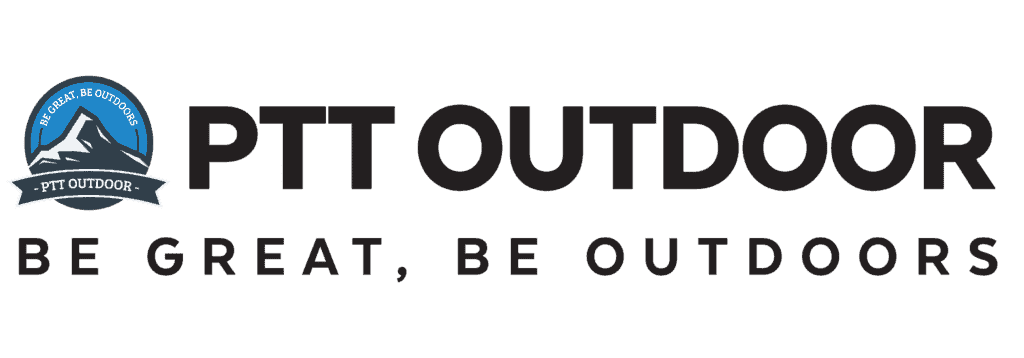
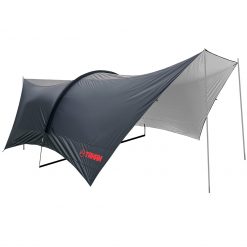
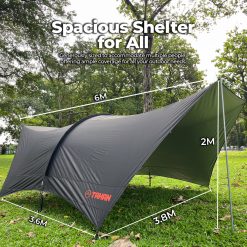
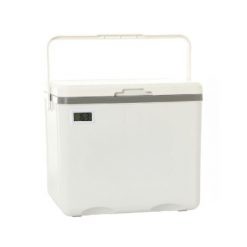
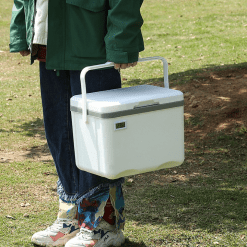
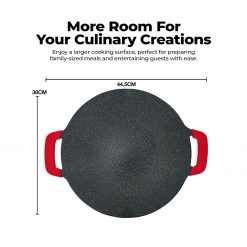
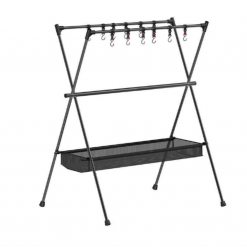
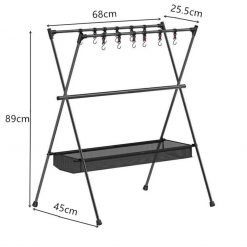
Shop Our Gears
Camp & Hike
TAHAN
COMBO
SLEEP SYSTEM
More tips that you might find useful:
12 Secrets to Getting Cheap Flights in Malaysia
1 Comments
马来西亚露营:户外探险综合指南
Camping in Malaysia: A Comprehensive Guide to Outdoor Adventures
2 Comments
Conquering Mount Kinabalu: A Hiker’s Guide to Malaysia’s Highest Peak
Camp Cooking Gear Guide – Build the Ultimate Camp Kitchen!
Top 5 Most Popular Campsites in Selangor
Ultimate Guide to Tropical Leisure Camping in Malaysia: TAHAN’s Top 5 Gear Picks
The Ultimate Guide to Hammock in Malaysia: Comfort, Adventure, and Relaxation